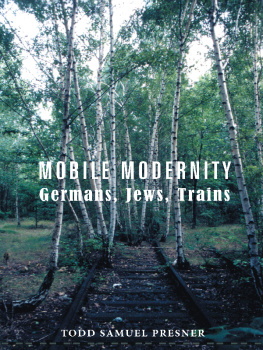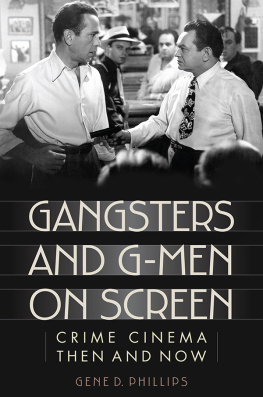Rebecca Harrison is Lecturer in Film and Television Studies at the University of Glasgow. She received her PhD from University College London (UCL), and has presented her research in peer-reviewed journals and at conferences internationally.
From Steam to Screen uses an extraordinarily productive thematic structure to draw out the myriad of interconnections between cinema, modernity and the railways. Covering class, gender, travel, empire, space and time, Harrisons compelling analysis keeps film at the centre yet incorporates a number of issues of wider cultural and historical significance. The book is simply a first-rate, fast-track way into understanding how both cinema and the railways affected peoples lives at key moments in the last century.
Sarah Street, University of Bristol
Harrisons important study reveals the entwined histories of the railway and cinema in the early British twentieth century. She explores, using rich archival research, how cinema allows us to access neglected spaces and narratives of the past, uncovering the experiences of women, children and other historically marginalised groups. A fascinating read.
Michael Williams, University of Southampton
Cinema and Society series
General Editor: Jeffrey Richards
Acting for the Silent Screen: Film Actors and Aspiration between the Wars
Chris ORourke
The Age of the Dream Palace: Cinema and Society in 1930s Britain
Jeffrey Richards
Banned in the USA: British Films in the United States and their Censorship, 19331960
Anthony Slide
Best of British: Cinema and Society from 1930 to the Present
Anthony Aldgate & Jeffrey Richards
Beyond a Joke: Parody in English Film and Television Comedy
Neil Archer
Brigadoon, Braveheart and the Scots: Distortions of Scotland in Hollywood Cinema
Colin McArthur
Britain Can Take It: British Cinema in the Second World War
Tony Aldgate & Jeffrey Richards
The British at War: Cinema, State and Propaganda, 19391945
James Chapman
British Childrens Cinema: From the Thief of Bagdad to Wallace and Gromit
Noel Brown
British Cinema and the Cold War: The State, Propaganda and Consensus
Tony Shaw
British Film Design: A History
Laurie N. Ede
Children, Cinema and Censorship: From Dracula to the Dead End Kids
Sarah J. Smith
China and the Chinese in Popular Film: From Fu Manchu to Charlie Chan
Jeffrey Richards
Christmas at the Movies: Images of Christmas in American, British and European Cinema
Edited by Mark Connelly
The Classic French Cinema 19301960
Colin Crisp
The Crowded Prairie: American National Identity in the Hollywood Western
Michael Coyne
The Death Penalty in American Cinema: Criminality and Retribution in Hollywood Film
Yvonne Kozlovsky-Golan
Distorted Images: British National Identity and Film in the 1920s
Kenton Bamford
The Euro-Western: Reframing Gender, Race and the Other in Film
Lee Broughton
An Everyday Magic: Cinema and Cultural Memory
Annette Kuhn
Family Films in Global Cinema: The World Beyond Disney
Edited by Noel Brown and Bruce Babington
Femininity in the Frame: Women and 1950s British Popular Cinema
Melanie Bell
Film and Community in Britain and France: From La Rgle du jeu to Room at the Top
Margaret Butler
Film Propaganda: Soviet Russia and Nazi Germany
Richard Taylor
The Finest Years: British Cinema of the 1940s
Charles Drazin
Frank Capras Eastern Horizons: American Identity and the Cinema of International Relations
Elizabeth Rawitsch
From Moscow to Madrid: European Cities, Postmodern Cinema
Ewa Mazierska & Laura Rascaroli
From Steam to Screen: Cinema, the Railways and Modernity
Rebecca Harrison
Hollywood and the Americanization of Britain: From the 1920s to the Present
Mark Glancy
The Hollywood Family Film: A History, from Shirley Temple to Harry Potter
Noel Brown
Hollywood Genres and Postwar America: Masculinity, Family and Nation in Popular Movies and Film Noir
Mike Chopra-Gant
Hollywood Riots: Violent Crowds and Progressive Politics in American Film
Doug Dibbern
Hollywoods History Films
David Eldridge
Hollywoods New Radicalism: War, Globalisation and the Movies from Reagan to George W. Bush
Ben Dickenson
Licence to Thrill: A Cultural History of the James Bond Films
James Chapman
The New Scottish Cinema
Jonathan Murray
Past and Present: National Identity and the British Historical Film
James Chapman
Powell and Pressburger: A Cinema of Magic Spaces
Andrew Moor
Projecting Tomorrow: Science Fiction and Popular Cinema
James Chapman & Nicholas J. Cull
Propaganda and the German Cinema, 19331945
David Welch
Shooting the Civil War: Cinema, History and American National Identity
Jenny Barrett
Spaghetti Westerns: Cowboys and Europeans from Karl May to Sergio Leone
Christopher Frayling
Spectacular Narratives: Hollywood in the Age of the Blockbuster
Geoff King
Typical Men: The Representation of Masculinity in Popular British Cinema
Andrew Spicer
The Unknown 1930s: An Alternative History of the British Cinema, 19291939
Edited by Jeffrey Richards
Withnail and Us: Cult Films and Film Cults in British Cinema
Justin Smith

Published in 2018 by
I.B.Tauris & Co. Ltd
London New York
www.ibtauris.com
Copyright 2018 Rebecca Harrison
The right of Rebecca Harrison to be identified as the author of this work has been asserted by the author in accordance with the Copyright, Designs and Patents Act 1988.
All rights reserved. Except for brief quotations in a review, this book, or any part thereof, may not be reproduced, stored in or introduced into a retrieval system, or transmitted, in any form or by any means, electronic, mechanical, photocopying, recording or otherwise, without the prior written permission of the publisher.
Every attempt has been made to gain permission for the use of the images in this book. Any omissions will be rectified in future editions.
References to websites were correct at the time of writing.
Cinema and Society Series
ISBN: 978 1 78453 915 3
eISBN: 978 1 78672 322 2
ePDF: 978 1 78673 322 1
A full CIP record for this book is available from the British Library
A full CIP record is available from the Library of Congress
Library of Congress Catalog Card Number: available
Contents
List of Illustrations
Vicky Paige and Boris Lermentov meet inside a railway carriage in The Red Shoes (The Archers, 1948).
The eponymous countryman is scared by the oncoming, onscreen train in The Countryman and the Cinematograph (R W Paul, 1901).
The railway, a symbol of modernity, stretches into a rural environment and so collapses the distance between urban and pastoral space in Metropolitan Railway (1910).
A cartoon in Worlds Fair reveals that new technology was just as important at countryside shows as in the metropolis. See Worlds Fair, Chronophone, March 30, 1907.
Architects drawing of passenger rolling stock being converted to an ambulance train. Detail from Railway News, War Department Ambulance Trains as Arranged from the Existing L&SWRs Stock, August 30, 1914.
The pervasive whiteness of the war as displayed in advertising for Bengers Food. See Illustrated London News, Bengers Food, July 13, 1918.
Joan travels down the outside of the train as she attempts to thwart the villain in
Next page














